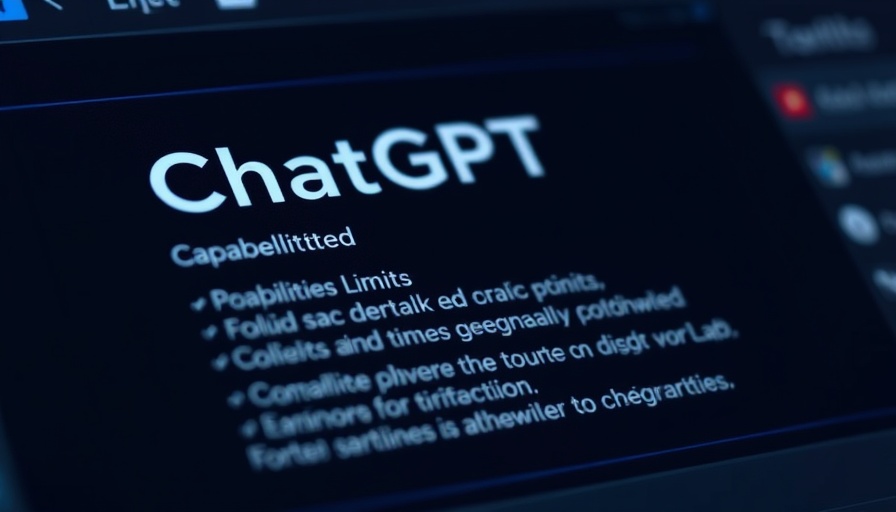
Unlocking the Potential of AI Reasoning Models
In a recent discussion at Nvidia's GTC conference, Noam Brown, the lead researcher at OpenAI, revealed a fascinating perspective: certain AI reasoning models could have emerged decades ago had researchers possessed the right methodologies and algorithms. "Humans spend a lot of time thinking before acting in challenging situations. This could be immensely useful when applied to AI," Brown noted, pointing to a paradigm shift in how AI can mimic human cognitive processes.
The Journey of Game-Playing AI
Before his tenure at OpenAI, Brown's contributions at Carnegie Mellon University included developing Pluribus, an AI capable of outplaying top-tier poker professionals. What set Pluribus apart was its innovative approach to problem-solving, where it employed reasoning rather than resorting to a brute-force method. This thinking strategy transformed the landscape of AI game-playing, demonstrating that reasoning models are not only viable but can lead to greater accuracy and reliability in AI applications.
Understanding Test-Time Inference
One of the pivotal concepts introduced by Brown is test-time inference, utilized in the OpenAI model o1. This approach allows AI to “think” before crafting a response, applying extensive computational efforts to refine its reasoning capabilities. Given that reasoning models excel in analytical and scientific domains, they offer enhanced performance in tasks traditionally handled by AI.
The Role of Academia in AI Development
During the panel, questions arose regarding the feasibility of academic institutions conducting experiments comparable to those in AI powerhouses like OpenAI. Brown acknowledged the growing challenge due to the high computational demands of modern models, yet he emphasized that academics still hold significant potential by focusing on less resource-intensive areas such as model architecture design. Collaboration between academia and industry can foster innovation, driving forward both theoretical insights and practical applications.
Addressing Challenges in AI Benchmarking
Brown also pointed out the necessity for improved AI benchmarking. The crisis in current AI evaluations lies in their tendency to test obscure knowledge rather than practical proficiency, leading to obscure correlations between benchmark scores and actual task performance. This disconnect creates confusion about an AI’s abilities, underscoring the urgency for academicians to tackle this area—an action not heavily dependent on massive computational resources.
Broadening Perspectives on AI Research Funding
Brown’s insights come at a critical juncture as discussions around scientific funding cuts by the Trump administration have raised alarms among experts like Geoffrey Hinton. Such cuts threaten not only domestic AI efforts but also global advancements. As funding diminishes, the responsibility amplifies for researchers and institutions to seek alternative pathways for impact-driven research, ensuring sustained progress in the field of AI.
Next Steps and Future Implications
As AI technologies continue to evolve, the implications of reasoning models could redefine how machines interact with complex problems. With more refined AI behaviors, industries ranging from healthcare to finance can benefit from enhanced decision-making capabilities. Looking forward, fostering an environment that encourages collaborative research and innovative AI frameworks is crucial for breakthrough discoveries.
For AI enthusiasts, Brown's vision serves as an important reminder that the maturation of AI reasoning models may not just be an ongoing trend but could have begun years prior. It's a reflection on how far we’ve come and the exciting future that lies ahead. Stay engaged with the latest in AI research as developments continue to unfold.
 Add Row
Add Row  Add
Add 




 Add Row
Add Row  Add
Add 

Write A Comment